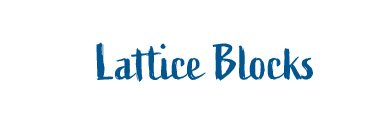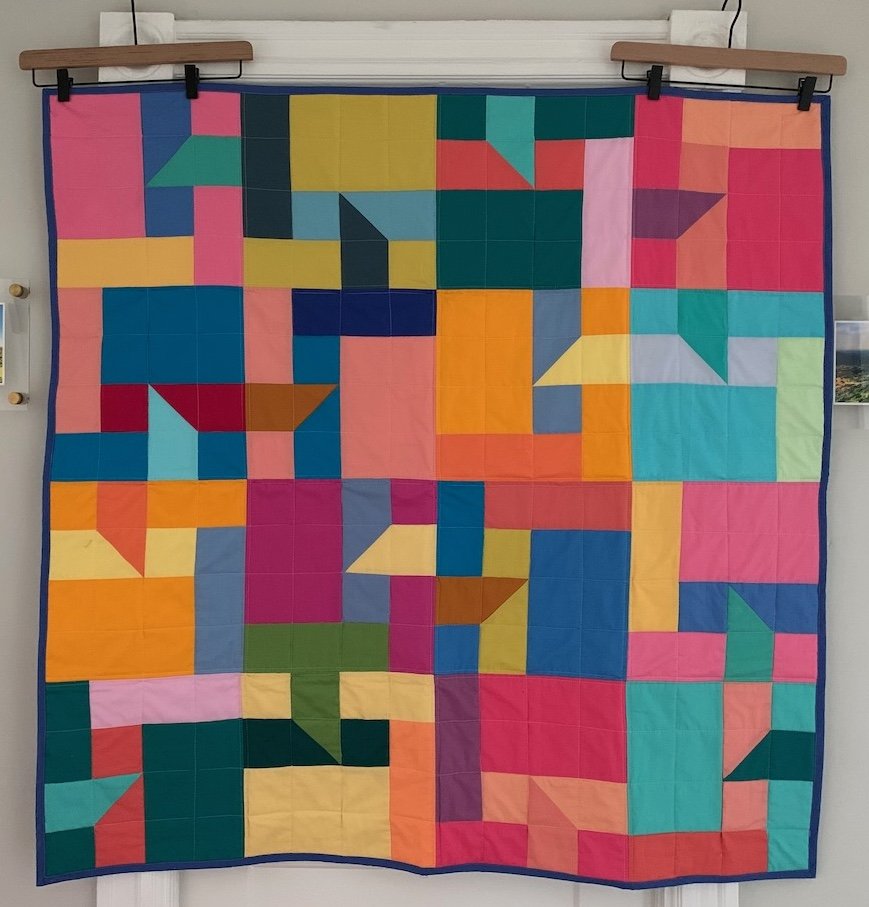Charity Committee Update
Fourteen beautiful quilts by Kris where donated yesterday to DC Diaper Bank. Thank you for quilting a bunch of those, Fran!
We have now donated 295 quilts! Will you help us get to our goal of 300 donated quilts this year?
Please remember to label and wash your quilts prior to delivering them. If you need labels, batting or backing fabric, just let Bia know through dcmqgcharity@gmail.com.
DCMQG is happy to host a yearly Charity Quilting Bee. Groups are organized to collaborate and create charity quilts which will be donated to the charities we currently support. For more information about the charities we support, including sizes, please see DCMQG Gives Back.
Quilting bees are small groups of quilters who come together to make quilts as a community, working on blocks for each other's quilts. Each month, a different Bee participant is the host. The host decides on a quilt design, informs participants of the requirements for the blocks (finished size, color, design and construction). The other Bee members create and deliver blocks for the quilt to the host. The host is responsible for piecing the top and completing the quilt, which will be donated to one of our charities (but no need to finish it in a month!)
Bees will have 6 to 8 members and they will last about 6 to 8 months. Bees are a great way to create friendships and form community bonds!
Suggested Guidelines:
Keep the design simple, but anything goes: wonky, improv or traditional.
Choose a color scheme and allow members to choose fabric from their stash, or go scrappy.
Always use a 1/4 inch seam allowance.
Always use 100% quilting cotton.
Always communicate with the host if you have questions on color, design or if you need a deadline extension.
Each Bee needs a Coordinator who will have the following responsibilities:
Schedule and manage the schedule for the hosts.
Check in with Bee hosts and participants.
Open a communication channel (email, Instagram, Facebook, whatever works for the group).
Schedule in person meetings (at cafes, parks and/or someone’s home).
Discuss deadlines.
Troubleshoot issues.
As a Bee participant you will need to:
Share an email for easy communication and an address where blocks can be mailed when it is your turn to host. Blocks can also be delivered at DCMQG meetings, if the host agrees and attends.
Create blocks for other members of the Bee. You may be asked to do 2 large blocks, 4 medium or 6 small blocks per month, with 2 blocks normally being the majority of requests.
Provide clear instructions and expectations for the quilt you would like to make, when it is your time to host.
Finish your charity quilt when it is your time to host.
Add a DCMQG label.
Wash the quilt so it is ready to be donated.
Labels: DCMQG has two kinds of labels and either one should be attached to the back of charity quilts. We have cloth labels that can be pieced or attached to the back and small tag label that can be added while you bind your quilt. If you use the small tag labels, peel the back, fold them and then attach when binding. Labels are available at meetings or can be mailed to you by contacting dcmqgcharity@gmail.com. You can check label suggestions from our members at https://dcmodernquiltguild.com/quilt-labels.
Resources
You can find some resources below to give you ideas for blocks and quilts when your turn to host arrives.
On Instagram, you can check #dogoodstitches . They are a well established long running Charity Bee.
The DCMQG Website has several resources listed under the link "Resources"on the home page.
The examples below are from our DCMQG members collected from the 2023 Charity Bee.
The following descriptions for the blocks are from the emails the Bee Leader for the month in 2023 sent to the other members of the group. They’ve been provided as examples of what has been made in the past if you’d like to make one again in 2024. Or you can do a different pattern.
Materials: one 6” square of fabric and one 1.5” x 8.5” rectangle in contrasting value (can be same color/color family)
Cut 6” square of fabric on the diagonal
Sew rectangle to long edge of one triangle, right sides together, with a 1/4” seam
Sew other side of rectangle to long edge of second triangle, right sides together, with a 1/4” seam
Press seams open or to the dark side (your preference)
Please don’t trim, I will trim them all using the same ruler to try to get them as close in size as possible.
For more detailed instructions, download the PDF:
I'd like to request eight (8) mini (6”square) lattice blocks from each bee member (roughly equivalent to two 11” finished blocks per person, but I’d like to receive them in mini form so I can play with the layout!) I’m planning to assemble the final quilt in eight rows of six mini blocks, for a finished size approximately 33x44 inches.
The idea came from a recently finished quilt by Amber Johnson (@gigis_thimble
on Instagram) (here’s a link to the post (though ours will be much smaller :)):
https://www.instagram.com/p/CuC6d6zR8wj/?utm_source=ig_web_copy_link&igshid=MzRlODBiNWFlZA==):
Color-wise I’d like you to use print fabrics in a portion of the rainbow, including yellows, greens, blues, purples, and pinks. Please make the lattice “stripe” for each block contrast in value to the triangles (so if you have a light value stripe, use darker value triangles and vice versa). I’d prefer prints over solids if possible, and low or medium volume prints will be great (just no giant “show stopping” prints!). I’m hoping there will be a scrappy feel to the finished quilt, so the more different fabrics/colors you can use, the better.
In case anyone is unfamiliar with lattice blocks, here is a brief overview (yields 1):
Here are my blocks to give you a sense of what I have in mind.
Sew your squares together in 3 rows of 3 -- the order really doesn't matter! This is what will make this D9P "modern" :) Then sew the rows together to make a nine-patch.
3. Then mix up the pieces and sew them back together into a square. The block should be around 12" once pressed. (They'll be 11.5" in the finished quilt.) FYI, the picture below shows 2 blocks in case that wasn't clear!
For June's block I'd like two Disappearing Nine Patches. I love the versatility of the "D9P" and it's also just incredibly quick and easy. For each block you'll need:
Nine 4.5" squares in a mix of bright colors (think ROYGBIV) and low volume. For the colored blocks, please use solids or blenders/near-solids (read as one color from far away). If you are new to quilting, low volume refers to white, off white, or light gray prints that have the effect of creating a background.
The placement of the squares within the nine-patch doesn't really matter, as the finished quilt is going to have the look of being improv-pieced. Blocks can have anywhere between 3 and 6 colored squares and the rest low volume.
2. Press seams (any direction—open, to one side, I don’t care!), then here comes the disappearing part! Cut your nine patch down the middle horizontally and vertically.
Blocks can be mailed to my address, or I can arrange to pick them up from you. I plan to sew these blocks up into a baby quilt for the DC Diaper Bank this summer.
Request:
Size - Two 12.5” square blocks, no need to trim as long as they are at least 12.5” square.
Strip width - anywhere between 0.5” and 2.0”. They don’t have to be parallel, and they don’t have to be straight as long as the block lies flat.
Colors - blue and orange. The blues can be anywhere from light blue to navy. And the oranges can be anywhere between yellow and red but no yellow and no red. Solid or prints. You don’t have to alternate blue and orange.
'm starting us off simple (I think?) with a block I bookmarked from the MQG last year. It has a unique construction so I've been wanting to try it out.
Here's the pattern: https://www.themodernquiltguild.com/wp-content/uploads/2022/06/Tesseract_Ruiz.pdf
My color palette request is the same one featured throughout the pdf, what I'm calling bright Easter pastels. You can see more here and here and there is a list on page 6 of the pdf (though feel free to use any brand fabric and anything in range, I'm not picky). I think I will do the scrappy layout on page 9 of the pattern.
Each person will do 2 blocks though I'd like to do a 4x4 layout so if anyone is on a roll or feels like using up scraps, I'd take a 3rd block from any volunteers, otherwise I can make up the difference. The blocks should finish 12"x12".




















